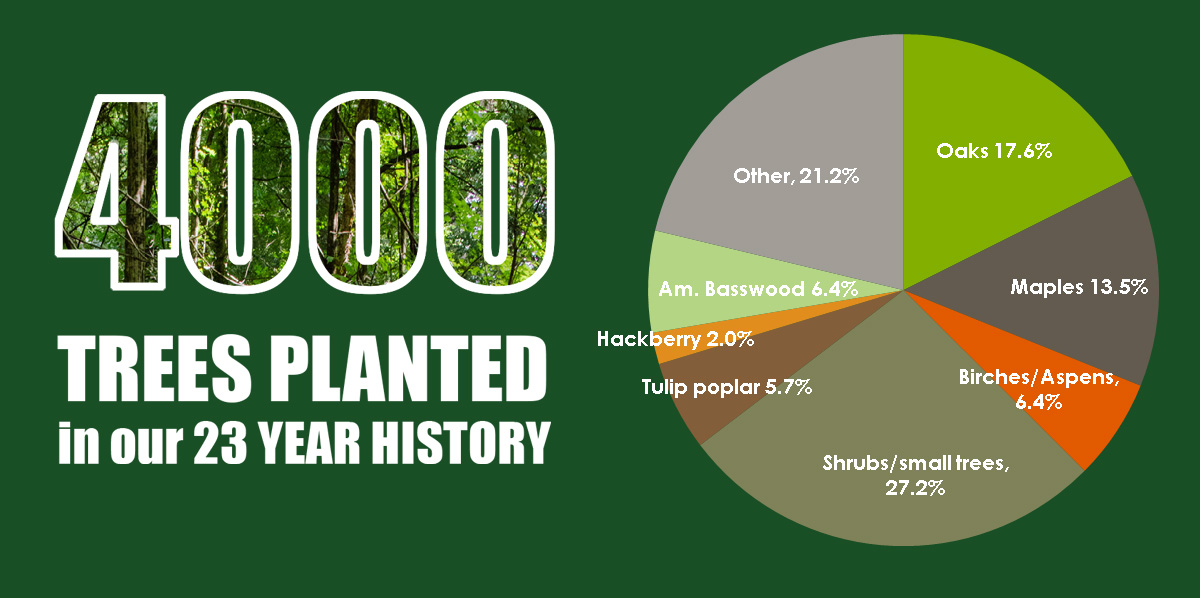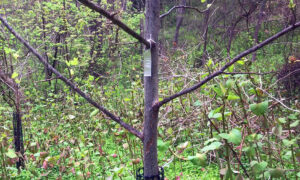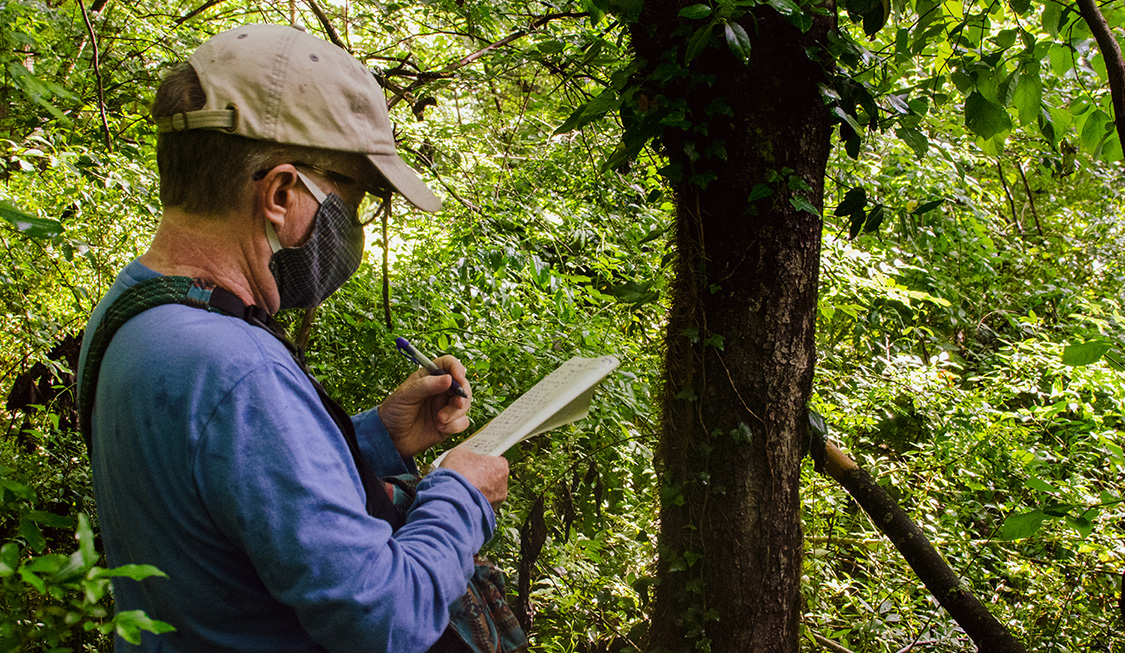
Surveying the Data
Beginning winter 2019, WRV began a systematic survey of all our planting projects in the Wissahickon. The purpose of the survey is to understand how well our plants are surviving, and to get a sense of the different survival and growth rates of different plants over the years. We will be able to use this information in future planning, including species selection for our projects.
The first step in this undertaking involved matching planting records with dates and sites. Sometimes this involved detective work such as locating handwritten notes and orders from nurseries going back over twenty years, and tying those records to a specific site and volunteer work crew. We located about 4,100 individual plants for which we had good installation records at sites throughout the Wissahickon.
 The next step involved matching planting records with observations in the field, to learn the results of our work. This is a painstaking process. It means all-season trips to our sites to locate plants, measuring their growth, and assigning a unique ID number to each stem. Some of these restoration projects began in the late 1990s, and some were started just a few years ago. So far we have located about 500 plants with good certainty at nine of our restoration sites.
The next step involved matching planting records with observations in the field, to learn the results of our work. This is a painstaking process. It means all-season trips to our sites to locate plants, measuring their growth, and assigning a unique ID number to each stem. Some of these restoration projects began in the late 1990s, and some were started just a few years ago. So far we have located about 500 plants with good certainty at nine of our restoration sites.
Even this sample of about 12% of our plantings allows us to develop a picture of which species are surviving and what kind of increased diversity we have been able to promote over the years.

WRV President Steve Jones spent many hours of 2020 searching for and cataloguing past plantings.
Results
Here are some of the results of the research on our plantings:
We have planted a diversity of woody plant species, with representatives from a variety of species and ecological niches. We have planted about 65 different species, about 30 of which make up at least 1% of the total. About a fifth of our plantings are oaks, in seven different species, and a slightly smaller proportion are maples. Two individual tree species, American basswood and tulip poplar, make up a significant proportion of our plantings. About a quarter of our plantings are shrubs and smaller trees, which fill the understory layer of the forest.
As for our field observations, we visited nine different sites, and used leaves, fruit, leaf buds, and bark to identify most of the plants. (In some cases, labels from the original plantings were still legible on the trees!) These plants represented 40 species. So far, our takeaways include:
- Survival rates in plantings from the past five years or so are close to 100%. This success likely relates to our strategy of planting trees that are as large and mature as possible in order to resist deer and invasive pressure. Naturally, older sites are likely to have much lower survival rates.
- The species mix of surviving plants is similar to the mix of the plantings.
- The proportion of shrubs and small trees is greater on the ground than in the original plantings. This is not surprising given the higher vulnerability of these plants to pressure from deer and invasive plants.
- The proportion of tulip poplars on the ground is even greater than in the original plantings.
Pleasant surprises included the observation that some of the higher-quality trees in terms of habitat value, such as chestnut oak, seem to be doing well.
WRV’s data project is a good example of a program that can continue even with the need for social distancing due to the pandemic. In 2021 we plan to continue with the field observations, and hope to observe a bigger chunk of our plantings. We’ll keep you up to date with future results!
Thank you for reading! Please consider supporting our work.
Your donation will help keep the Wissahickon green and diverse, and all donations are Tax deductible.

